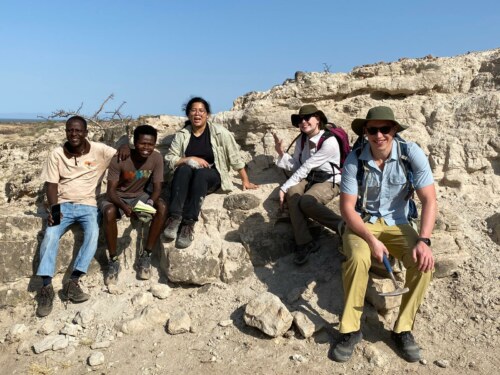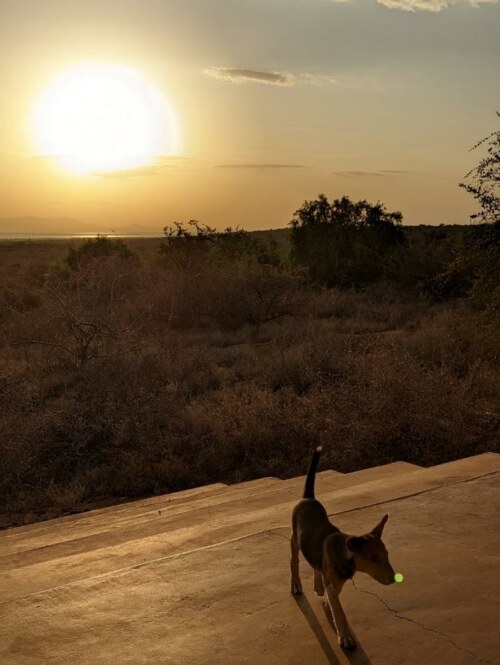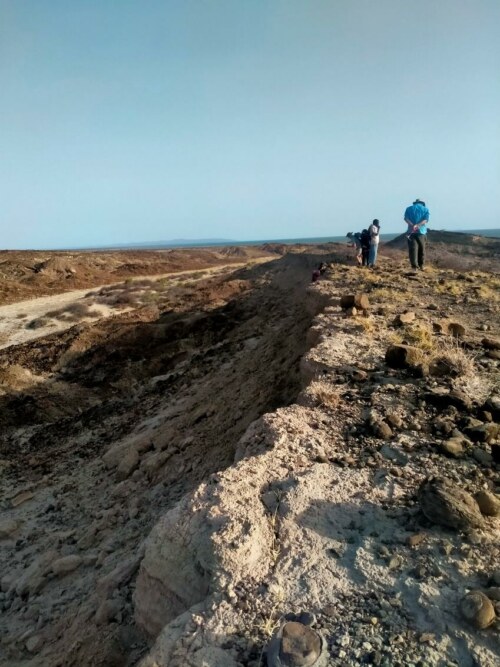On the Eastern side of Lake Turkana, the sediments reveal information about the early evolution of humankind. The sedimentary sequences tell us what it would have been like for early humans such as Paranthropus boisei, Homo erectus, and early Homo species millions of years ago. However, in stark contrast to the ecosystem that was home to these hominids, the Omo-Turkana Basin was subjected to a force not even humans could control… volcanoes. Volcanic ash deposits (also known as tuffs) are scattered throughout the fossiliferous sediments and suggest that the environment was tumultuous during the Plio-Pleistocene. Although the impact of the volcanic eruptions may have been adverse for the ecology, the volcanic tuffs serve as our building blocks for understanding time. These tuffs can be dated using an absolute dating technique (called 40Ar/39Ar dating) to determine ages for the hominid fossils that cannot be determined by stratigraphy alone. The 40Ar/39Ar Geochronology research group at The University of Melbourne – Prof. David Phillips, Dr. Hayden Dalton, and PhD students Saini Samim and Ash Savelkouls are working to date these tuffs using ultra-precise 40Ar/39Ar dating techniques which allow tuffs, and associated hominids to be dated with uncertainty levels of less than 5,000 years!
There are over 600 tuffs identified in the Omo-Turkana Basin that were erupted over a timespan of four million years; however, dating these tuffs is not as simple as it seems. The target mineral for 40Ar/39Ar geochronology is feldspar – found in the pumices associated with these tuffs. Pumice is an interesting rock (not only used to scrub the bottom of your feet) that forms during a volcanic eruption when molten magma is ejected high into the air, cooling quickly, leaving glass, feldspar and vesicles behind. Because of this, pumice is extremely light and is the only rock that can float on water meaning it is often found accumulated in channel deposits or on the top of a tuff. Luckily, we can use geochemistry to ensure the correct pumice is collected. Each pumice has a geochemical fingerprint and can be matched to its parent tuff from the same eruption.
In June 2022, we headed out to the east of Lake Turkana on a hunt to find these elusive pumices. Pumices were in abundance this field season – we found several very large pumices (football sized) with help from field assistant Hillary Sale and Turkana Basin Institute (TBI) intern Stephen Bulyar whose refined eyesight from fossil hunting was ideal for spotting hidden pumices.

Pumice Hunters! The team: Hillary Sale, Stephen Bulyar, Saini Samim (pictured next to an enormous pumice clast in the Chari Tuff), Ash Savelkouls and Hayden Dalton
After a long, hot morning in the field we would head back to TBI Ileret for a delicious lunch (asante – Edwin & Nas) and ready for an afternoon of crushing pumices and picking out the target mineral – feldspar. Often, we would have several helpers – Azimio, Jacinda, Bruno and Keio kept a watchful eye on the pumices in exchange for a head scratch.

Our beloved companion Azimio and the spectacular sunset from TBI Ileret
One of the most interesting days was when we headed to the Koobi Fora Research Project (KFRP) field camp, run by Nyette and his fossil hunting team. Camping for two nights we collected pumice and tuff samples related to an archeological site in Area 102 and 103 (pic 3). At this site, several hominid footprints and some exciting new homind fossils have been found! The tuffs collected from these areas will be used to constrain the age (~ 1.5 million years) of these finds and figure out where they belong within the stratigraphic framework.

Searching the Koobi Fora Fomation in Area 102. Lake Turkana and North Island pictured in the background.
The field season in 2022 was a great success – and could not have been so without the help and hospitality from TBI Ileret, field assistant Hillary Sale and invaluable discussions with fellow researchers at Ileret. Next time you are at Ileret, keep an eye out for pumices, you might not only find them in the field, but in the hydroponic gardens (the porosity is perfect for filtering water and helping plants grow).





